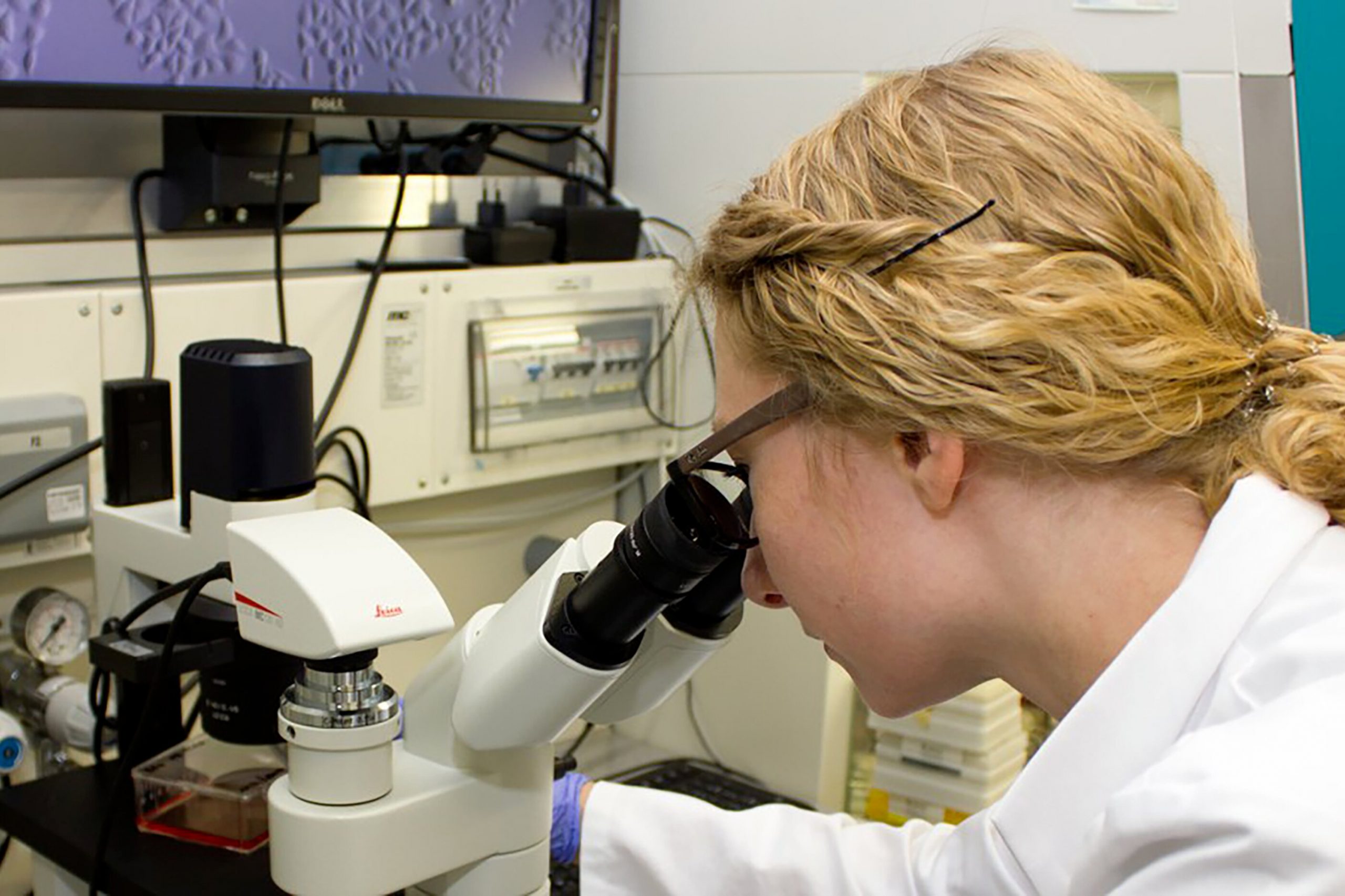Scientists from the Universities of Marburg and Giessen and the Fraunhofer Institute, Frankfurt, are testing a new strategy against corona: In the HELIATAR project, they are researching an active ingredient that inhibits a cell’s own enzyme, thus reducing the reproduction of many viruses.

To-date, there are no entirely effective drugs to fight coronavirus (SARS-CoV-2). While this virus was unknown to researchers until the beginning of the current pandemic, it is closely related to the SARS coronavirus, which caused an epidemic in 2003. But how can such emerging pathogens be effectively combated?
Scientists in Central Hessen are looking for an answer in their new research project, called HELIATAR. Their strategy: the development of a broad-spectrum active substance that is effective against as many different viruses as possible. But the substance does not attack invading viruses — instead, the active substance is directed against a cellular enzyme in the human body that is needed for the reproduction of different viruses. The German Federal Ministry of Education and Research (BMBF) is funding this innovative project for two years with approximately one million euros.
New strategy: Attacking corona viruses via host
“The development of broad-spectrum antiviral drugs that target the body’s own enzyme is a promising strategy for bringing epidemics under control at an early stage. In principle, we use the host to inhibit the proliferation of viruses in our cells,” says project coordinator Prof. Dr. Arnold Gruenweller from the Institute of Pharmaceutical Chemistry, under the working group of Prof. Dr. Roland K. Hartmann at the Department of Pharmacy at the Philipps University of Marburg. “This might enable us to remain capable of acting even in the case of previously unknown pathogens,” Gruenweller continues. “Virus resistances are less likely. In addition, interactions between different drugs are no longer necessary during the treatment of co-infections.”
Great potential, fewer side effects?
What is the science behind the Central Hessen researcher’s specific approach? Viruses do not have their own metabolism; they have no possibility of producing energy or protein synthesis. In order to multiply, some viruses — including Corona, Ebola, Lassa or Zika viruses — use a bodily enzyme: eIF4A. This is the enzyme to be investigated in more detail in the project “Validation of the RNA helicase eIF4A as an Antiviral Broadband Target” (HELIATAR).
This approach is being researched because if eIF4A is inhibited, many viruses can no longer have their viral proteins produced with the help of our cells, and thus the number of viruses in the infected cells is also efficiently reduced – an effect that has already been shown by several research studies. The active ingredient Silvestrol, which is obtained from Asian mahogany plants, or a synthetic derivative of Silvestrol called CR-31-B is used for inhibition. “Both active ingredients have low toxicity, which is a basic prerequisite for their use in humans. However, what has not yet been analyzed are the effects of the inhibition of eIF4A on our immune cells, possible resistance formation and possible side effects,” says Gruenweller. The HELIATAR project will now close this information gap. Preclinical investigations will be carried out and immunomodulatory effects will be analyzed. “With this research project we are making a significant contribution to drug development,” continues Gruenweller. “The development of new antiviral drugs is of immense importance, and in particular against highly pathogenic viruses. The results of the research planned here could thus be of great relevance for the pharmaceutical industry.”
Poject HELIATAR
The HELIATAR research team consists of scientists from the LOEWE Center DRUID: Prof. Dr. Arnold Gruenweller (project coordinator) and Prof. Dr. Andreas Heine from the Philipps University of Marburg, Prof. Dr. John Ziebuhr from Justus Liebig University of Giessen and Dr. Susanne Schiffmann from the Fraunhofer Institute for Molecular Biology and Applied Ecology IME in Frankfurt am Main.
